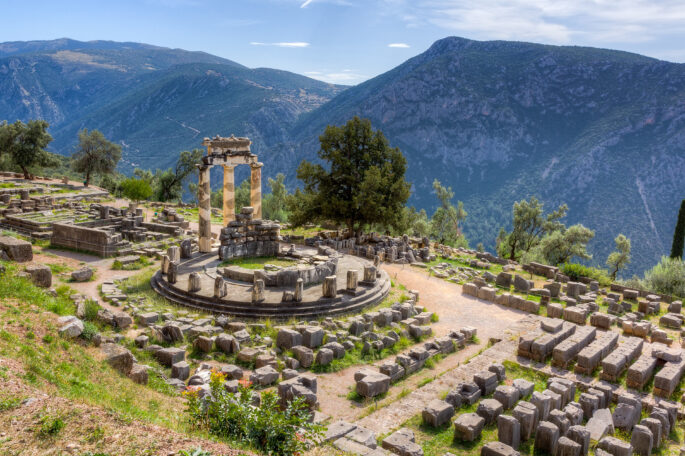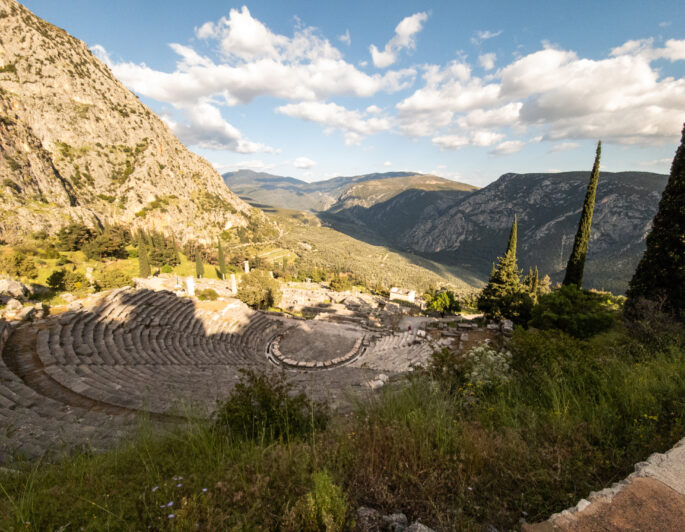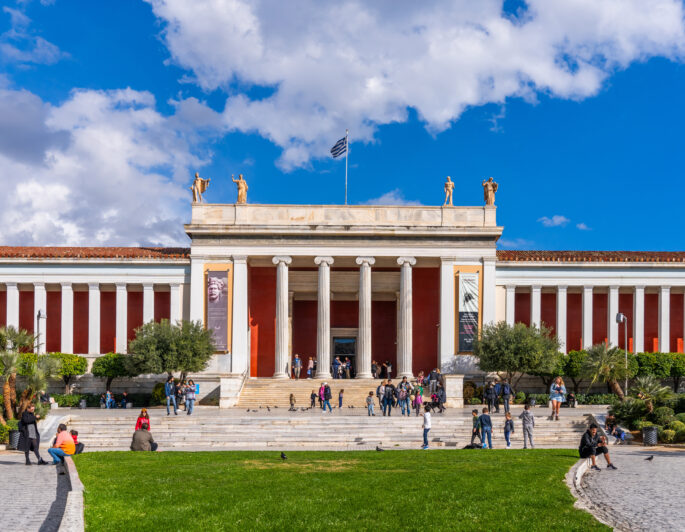
For thousands of years, seekers have walked the ancient paths of Greece, drawn by a longing for wisdom, healing, and divine connection. From the shadowed groves of Delphi, where the Oracle whispered cryptic truths, to the hallowed sanctuary of Eleusis, where initiates glimpsed the mysteries of life, death, and rebirth, the land itself seemed to pulse with sacred energy.
Pilgrimage in ancient Greece was more than a physical journey—it was a transformative odyssey of the soul. Travelers braved treacherous roads, crossed seas, and climbed mountains in pursuit of spiritual revelation. Some came to honor the gods, others to seek guidance for their fate, and many to undergo secret rites that promised enlightenment. Each stone path trodden, each temple visited, carried echoes of devotion, mystery, and profound inner change.
But what made these sacred sites so powerful? Why did pilgrims journey for weeks, even months, to stand before an altar or drink from a holy spring? And what can these ancient traditions teach us today?
In this exploration of sacred stones and spiritual journeys, we will uncover the profound significance of pilgrimage in ancient Greece—its rituals, destinations, and the lasting impact it has had on our understanding of faith, transformation, and the human connection to the divine.
Walking with the Gods: The Meaning of Pilgrimage in Ancient Greece
To the ancient Greeks, the land itself was alive with the presence of the divine. Mountains, rivers, and sacred groves were seen as the dwelling places of gods and spirits, and to journey through them was to step into a world where the veil between mortal and divine was thin. Pilgrimage was not simply about reaching a destination—it was a ritual in itself, a way of aligning with the sacred forces that shaped the cosmos. Every step taken toward sites like Delphi, Eleusis, or Epidaurus was imbued with meaning, offering the traveler a chance to reflect, seek wisdom, or prepare for a transformative experience. These journeys often followed established sacred routes, such as the Sacred Way to Eleusis, where initiates of the Eleusinian Mysteries walked in solemn procession, or the ascent to the Oracle of Delphi, where pilgrims climbed the winding path to Apollo’s temple, hoping for divine guidance.
Beyond devotion, these sacred travels also held the promise of healing and self-discovery. At Epidaurus, seekers engaged in dream incubation, sleeping within the temple of Asklepios to receive visions that would guide their recovery. At the Nekromanteion of Acheron, the so-called “Gateway to the Underworld,” pilgrims sought contact with the spirits of the dead, hoping for knowledge or closure. Even the act of journeying itself was transformative, as the physical endurance required to cross mountains, ford rivers, and endure long days of walking mirrored the internal shifts occurring within the soul. Along the way, travelers engaged in ceremonies, discussions, and meditations, much like those that will be experienced on our own pilgrimage through Thessaloniki, Vergina, Delphi, and beyond. To walk these ancient paths today is to follow in the footsteps of countless seekers before us, embracing the same spirit of inquiry, reverence, and renewal.
Eleusis and the Mysteries of Life, Death, and Rebirth
Among the most profound and secretive religious rites of ancient Greece were the Eleusinian Mysteries, a sacred initiation held in honor of Demeter and Persephone at the sanctuary of Eleusis, just outside Athens. For nearly two thousand years, these mysteries drew pilgrims from all walks of life—including philosophers like Plato and emperors like Marcus Aurelius—who sought enlightenment through an experience so profound that they were forbidden to speak of it. What we do know is that the rites symbolized the cyclical nature of life, death, and rebirth, mirroring Persephone’s descent into the Underworld and her return to the world of the living. This pilgrimage was not just a physical journey but an inner transformation, leading initiates through a process of spiritual awakening that promised them a deeper understanding of the universe and, some believed, a glimpse into the fate of the soul after death.

The power of the Eleusinian Mysteries lay in their ability to profoundly alter one’s perception of existence, offering initiates a sense of peace, renewal, and even fearlessness in the face of death. Unlike the transactional worship of many other Greek religious practices, where prayers and sacrifices were made in exchange for divine favor, the Eleusinian pilgrimage was a personal and immersive experience—one that could shift an individual’s relationship with the divine and the afterlife. The influence of these mysteries extended far beyond ancient Greece, shaping later spiritual traditions, including early Christianity and Western esoteric thought. Today, as we walk in the footsteps of those ancient seekers, visiting the ruins of Eleusis and contemplating its lost rites, we too step into the echoes of an age-old quest for meaning—one that continues to inspire the modern spiritual journey.
The Sacred Stones: Why Place Matters in Spirituality
In ancient Greece, spirituality was deeply intertwined with the landscape, as certain places were believed to hold divine energy and mystical power. These sites—whether a mountain peak, a flowing spring, or a hidden cave—were not chosen at random but were recognized as natural energy centers, places where the barrier between the human and divine worlds was especially thin. The Greeks built temples, oracles, and shrines in these locations to honor the gods, believing that the very land itself was imbued with sacred presence. Pilgrims traveled great distances to stand before the Temple of Apollo at Delphi, where the Oracle would channel divine messages, or to the Sanctuary of Eleusis, where initiates walked the Sacred Way seeking profound transformation. Even today, these sites retain a powerful atmosphere of reverence, inviting visitors to connect with the unseen forces that shaped ancient spirituality.
Beyond the built sanctuaries, Greece’s natural landscapes themselves were central to the spiritual experience. Mount Olympus, the legendary home of the gods, was not just a mythological concept but a real, towering presence that inspired awe and devotion. Springs, caves, and even certain islands, such as Delos, were regarded as sacred because of their associations with deities and myths. The Greeks understood that spiritual insight was often awakened through direct engagement with nature, whether through ritual purification in the Castalian Spring at Delphi or by climbing the hills of Eleusis during the Mysteries. This connection between sacred place and spiritual awakening is just as meaningful today—walking among these ancient stones, one can still sense the echoes of the past and experience the profound stillness, power, and wisdom that drew seekers here for millennia.
Pilgrimage as Transformation: Lessons from the Ancients
For the ancient Greeks, pilgrimage was not merely about reaching a sacred destination—it was a journey of inner transformation. To set foot on the Sacred Way to Eleusis, climb the heights of Delphi, or traverse the mountainous paths of Epidaurus was to embark on a process of self-discovery, purification, and enlightenment. The hardships of the road—long days of walking, exposure to the elements, and the emotional intensity of leaving behind the familiar—were all part of the experience. These physical challenges mirrored the spiritual trials that initiates faced, forcing them to let go of ordinary concerns and open themselves to divine wisdom. Just as those who completed the Eleusinian Mysteries were said to emerge with a new understanding of life and death, pilgrims who traveled to oracles and healing sanctuaries often returned home forever changed, their perspectives widened and their souls enriched by what they had encountered.
The power of pilgrimage endures, drawing seekers from around the world who wish to experience the same paths walked by the ancients. Whether contemplating the ruins of the Temple of Apollo at Delphi, where prophecy once shaped the fate of nations, or standing within the theater at Epidaurus, where sacred dramas were performed as a form of healing, the journey itself invites us to step beyond the limits of our daily lives and into something greater. In our modern pilgrimage through Greece’s most profound sites, led by Phil Cousineau, we will explore these ancient mysteries, engaging in conversations, reflections, and rituals designed to help us experience the transformative power of sacred travel just as the ancients did.
Conclusion: Walking the Ancient Paths Today

Though centuries have passed since the last initiates walked the Sacred Way to Eleusis, the power of these ancient pilgrimage routes has not faded. The stones remain, worn by time but still resonant with the footsteps of seekers, and the landscapes retain their mythic presence, offering modern travelers a chance to experience what so many before them sought—wisdom, healing, and a deeper connection to the divine. Today, as we stand before the Oracle of Delphi, climb the heights of Akamani, or walk the cobbled streets of Nafplion, we step into a living tradition, one that continues to shape the spiritual journeys of those who follow in its wake. The longing for meaning, transformation, and connection to something beyond ourselves is as ancient as civilization itself, and pilgrimage remains a timeless pathway to awakening.
For those who feel drawn to this sacred experience, our journey through Greece in 2025 offers a rare opportunity to engage with the Greek Mysteries in a deeply personal way. With the guidance of Phil Cousineau, we will walk in the footsteps of the ancients, visiting the sites where oracles spoke, gods were honored, and seekers found enlightenment. Through discussions, storytelling, and immersive site visits, we will explore not only the history of these places but the living spiritual essence they continue to hold. If you’ve ever felt the call to journey beyond the ordinary and into the heart of ancient wisdom, now is the time to answer it. Join us, and walk the ancient paths once more.
